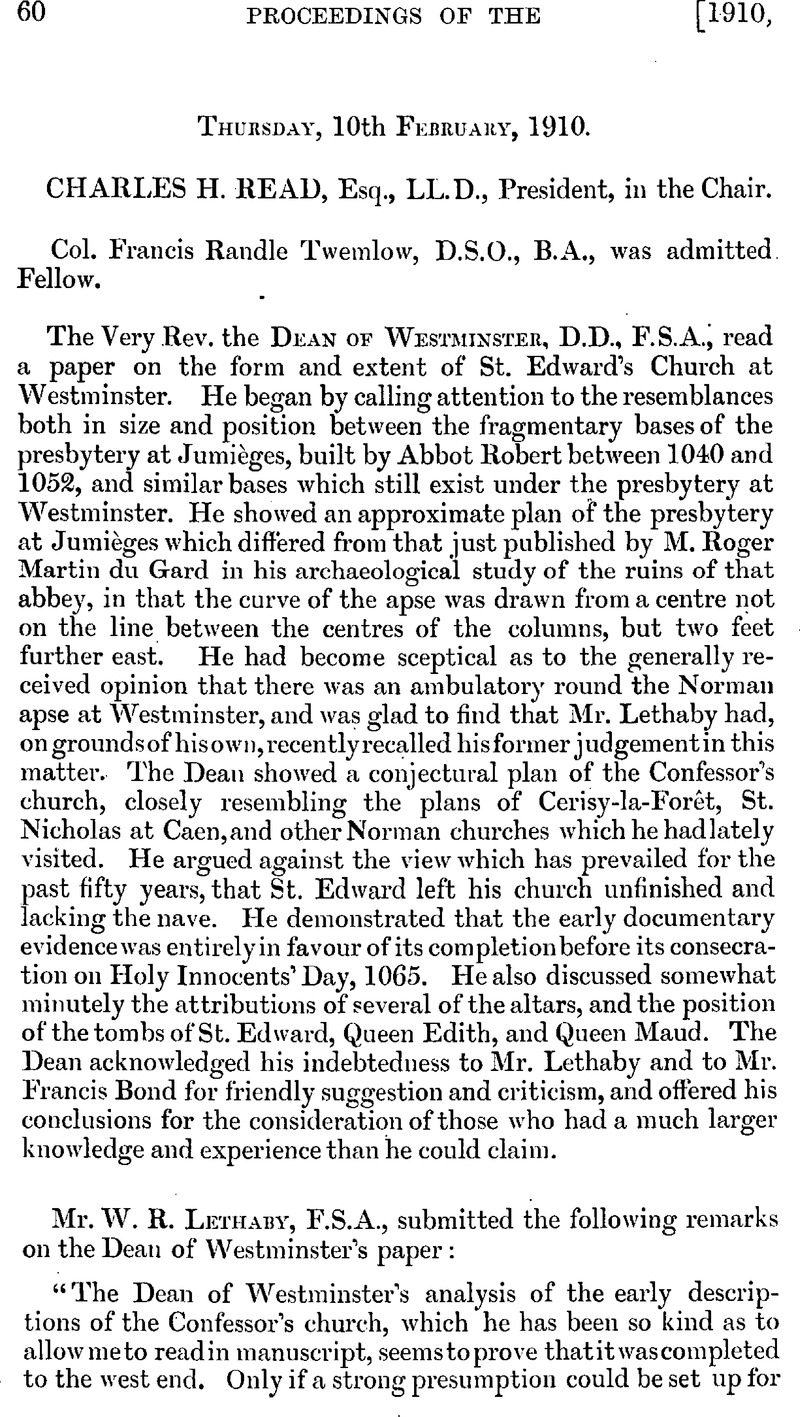No CrossRef data available.
Published online by Cambridge University Press: 10 May 2010

page 61 note 1 Mr. W. H. St. John Hope tells me it might be Roman, but that some paving of like sort was found at the Chapel of St. Pancras, Canterbury.
page 62 note 1 Bulletin Monumental, July, 1909.
page 62 note 2 Dawson Turnergivesthis dimension;also 31 feetfor the width of the quire.
page 62 note 3 I am assuming that like the other abbots' graves it was placed against a wall running east and west, in this case the south wall of the church. The Dean gives me the following note : “Abbot Edwin was buried in the cloister ‘in a place worthy of so great a father’. When the monastery was rebuilt (reedificato coenobio [not ecclesia]) he was placed in a coffin (which contained three other corpses) in the new chapter-house, by the entrance, on the south side. It is possible that he was buried at first by the wall of the nave aisle, or rather well out in the cloister walk, as the other abbots were in the south cloister. Their effigies were moved under the seat in the eighteenth century.
But it is equally possible that he was buried close to the chapter-house, as Abbot Bircheston was in 1349 (by the entrance of the locutory, next the dormitory door, in the cloister). As he almost certainly had no effigy, but only a flat stone over him, there would be no difficulty as to the orientation of his grave.
The rebuilding of the chapter-house and the adjoining part of the cloister would sufficiently tally with the words reedificato coenobio in Flete.”